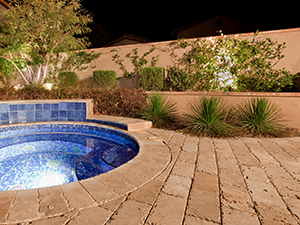April 19, 2022

LIMESTONE SELECTION AND CARE
The castle-like, serene palette limestone offers makes it a popular choice for homeowners in renovation projects or new construction. This article provides valuable information for anyone considering having limestone installed, as well as anyone with an existing installation. Read on to learn where limestone works best, why limestone is not suitable for wet areas, and how to care for limestone.Limestone: Suitable for Many Applications
Limestone is an organic sedimentary rock that forms from the accumulation of shell, coral, algal, and fecal debris — a stone of choice for many applications such as interior flooring or walls, fireplace surrounds, backsplashes, in living rooms and recreation rooms, and more. There are many different types of limestone. One of the most popular is travertine, which is often used in exterior installations, such as pool decks or hot tub surrounds.About Limestone in Wet Areas
Stone and tile professionals have noticed problems with limestone installations in showers and other areas that get excessive water exposure, such as staining and deterioration, or in some cases, complete disintegration of the stone. Unfortunately, the blame for problems is often misplaced on suppliers, fabricators, or installers, even though the material is sound and has been installed within industry guidelines.Here are a few reasons why:
Let's Look at Water
One may question the idea that limestone is suitable for areas that do not get excessive water exposure given the fact that limestone is often used for exterior installations without having any issues. This is true, but there is a big difference between the amount of water used in a bathroom shower and the amount of rain on an exterior installation. A bathroom shower, on average, produces over 8,000 inches of water per year. To put this in perspective, the rainiest area on earth is in China, which has 321 inches of rain per year. A shower has over 26 times that amount. That is a lot of water!Don't Replace Your Limestone!
If your limestone is already installed and you are having problems, don't replace it! Most limestone problems can be resolved with professional stone restoration and repair. For example, if your limestone has a highly polished finish, you may opt to switch to a honed finish, which requires less maintenance. Limestone can be professionally cleaned for a fresh, clean look, and sealed to inhibit staining. Etches, scratches, and dullness can be virtually erased with professional honing and polishing. For regular day-to-day care, use a stone-safe, neutral cleaner, and follow the care instructions in our free, downloadable Stone and Tile Care Guide. Contact us for answers to your limestone questions and specific recommendations for caring for your limestone.